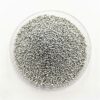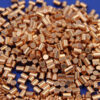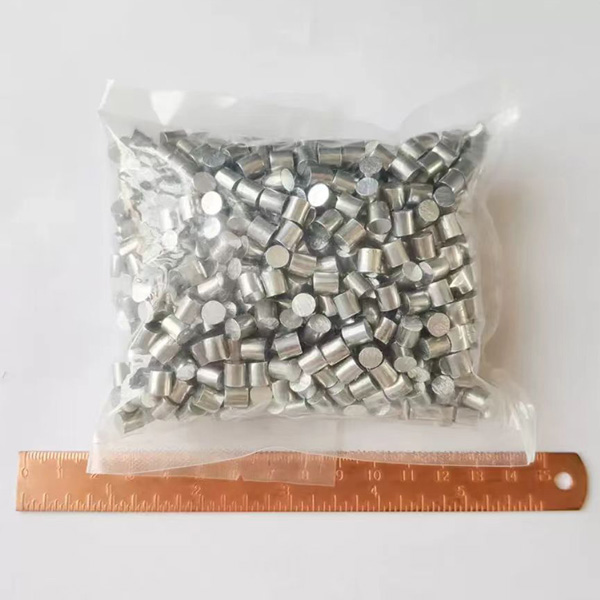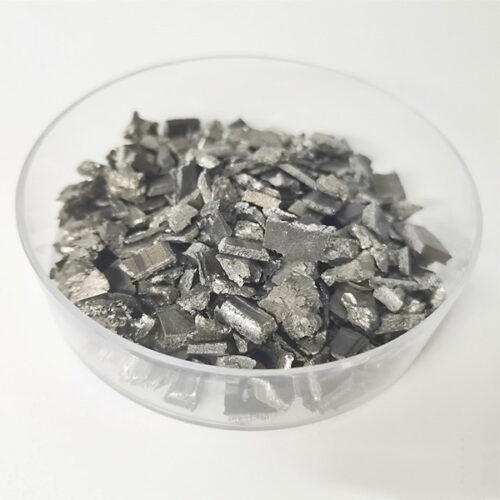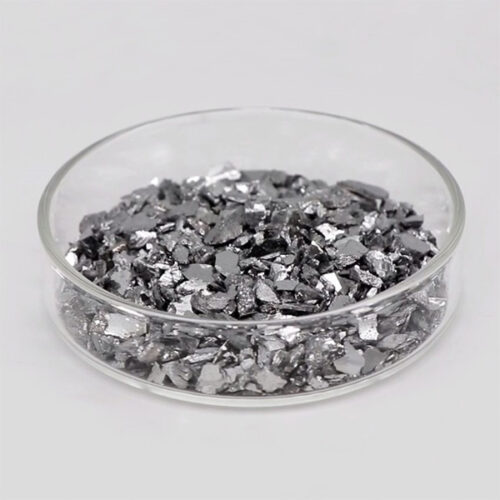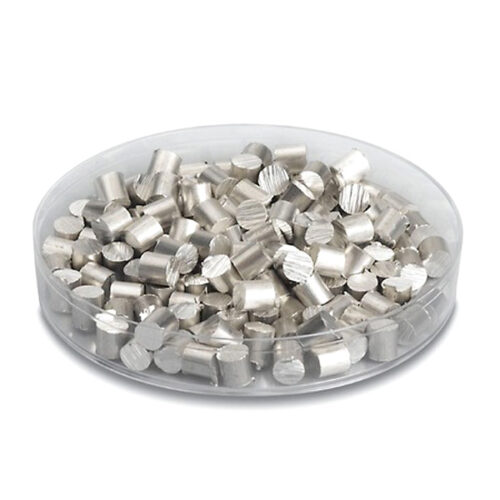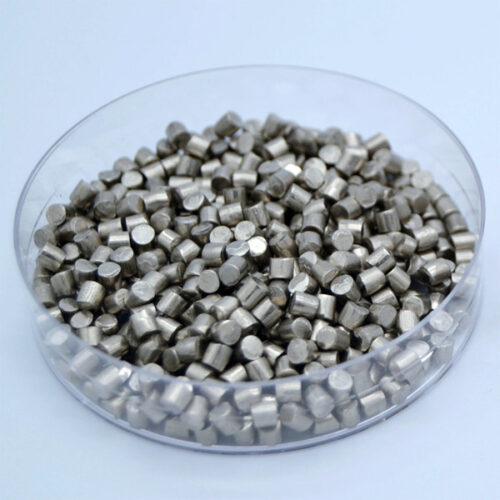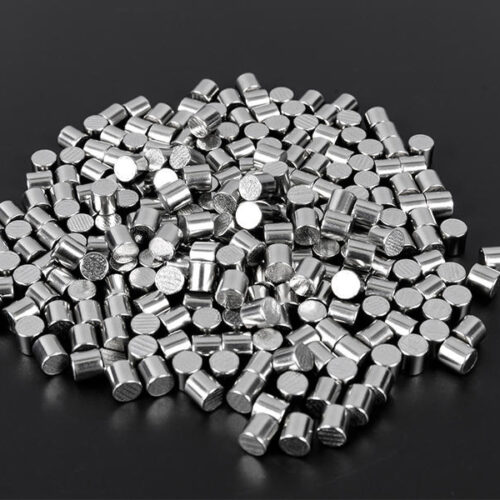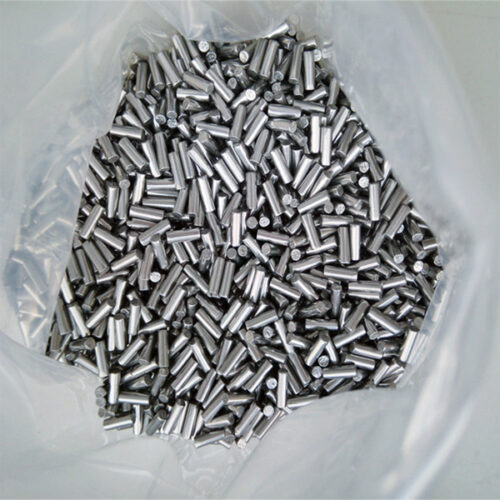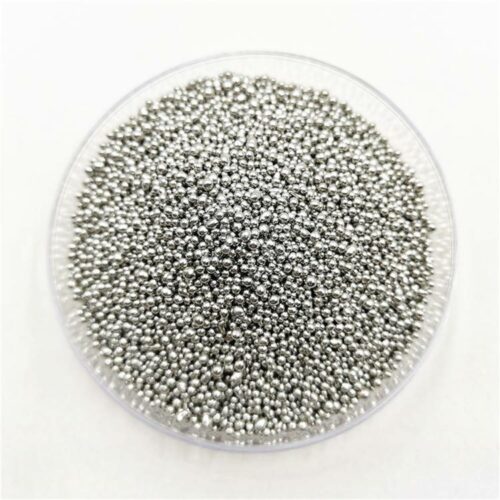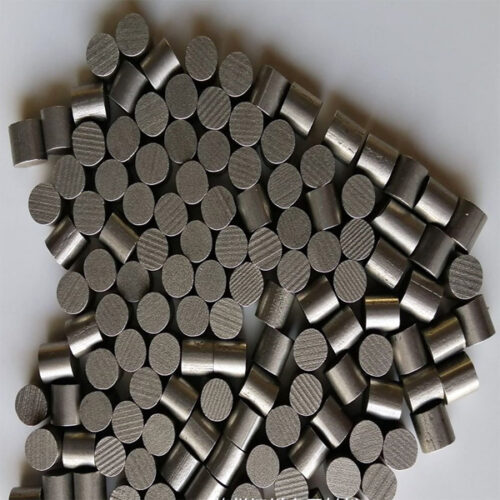4N5 (99.995%) Zinc (Zn) Pellets Evaporation Materials
Introduction:
Zinc evaporation materials refer to solid zinc substances that are specifically designed and manufactured for use in thermal evaporation processes. These materials are typically in the form of pellets, rods, wires, or other shapes, suitable for vaporization in a vacuum environment.
During the evaporation process, the solid zinc material is heated to its vaporization temperature, causing it to transition directly from a solid to a vapor state. The vaporized zinc then condenses onto a substrate surface, forming thin films or coatings with desired properties.
Zinc evaporation materials are utilized in various applications across industries such as galvanization, optical coatings, and semiconductor manufacturing.
Properties of Zinc Evaporation Materials:
1. Physical Properties
Appearance: Zinc exhibits a bluish pale gray appearance, distinguishing it from other metals.
Conductivity: While not as conductive as some metals, zinc still demonstrates fair electrical conductivity.
Melting and Boiling Points: With relatively low melting (419.5°C) and boiling points (907°C), zinc is suitable for thermal evaporation processes.
Diamagnetism: Zinc displays diamagnetic properties, repelling external magnetic fields under normal conditions.
2. Chemical Properties
Reactivity: Zinc is a moderately reactive metal, prone to oxidation and forming compounds with oxygen and non-metals during thermal evaporation.
Oxidation: Upon exposure to air, zinc forms a protective oxide layer, safeguarding its surface from further corrosion.
Compatibility: Zinc’s reactivity necessitates careful consideration of vacuum conditions during evaporation to prevent unwanted reactions with chamber components.
Applications:
1. Anode Applications
Galvanization: Zinc evaporation materials find extensive use in galvanizing processes, wherein zinc coatings are applied to steel surfaces to protect against corrosion and rust.
Battery Anodes: Zinc serves as a key material in various battery technologies, including alkaline batteries, due to its electrochemical properties and abundance.
2. Optical Coating
Antireflective Coatings: Thin films of zinc deposited via evaporation techniques enable the creation of antireflective coatings on optical surfaces, enhancing light transmission and reducing glare.
Optical Filters: Zinc-based coatings contribute to the production of optical filters for lenses, cameras, and spectacles, allowing for precise control of light wavelengths and transmission.
3. Semiconductor Applications
Transparent Conductive Layers: Zinc oxide (ZnO) films deposited through evaporation serve as transparent conductive layers in semiconductor devices, such as thin-film transistors (TFTs) and solar cells, facilitating efficient charge transport and device performance.
Gas Sensors: Zinc oxide thin films exhibit sensitivity to various gases, making them suitable for gas sensor applications in environmental monitoring and industrial safety systems.
Manufacturing Processes of Zinc Evaporation Materials:
1. Zinc Alloy Preparation
Zinc feedstock may undergo alloying processes to tailor its properties for specific applications, such as enhanced conductivity or improved corrosion resistance.
2. Evaporation Source Fabrication
Molten zinc is solidified into various forms, such as pellets, rods, or wires, suitable for use as evaporation sources in vacuum deposition systems.
Customized evaporation sources can be fabricated using techniques like powder metallurgy or casting to achieve desired compositions and shapes.
3. Vacuum Deposition
In a vacuum chamber, zinc evaporation materials are heated to their vaporization temperature under controlled conditions.
The vaporized zinc condenses onto substrate surfaces, forming thin films with tailored properties, such as corrosion resistance, optical transparency, or electrical conductivity.
Specification:
Our standard size are 3 mm Diameter x 3 mm Length or 6 mm Diameter x 6 mm Length.

